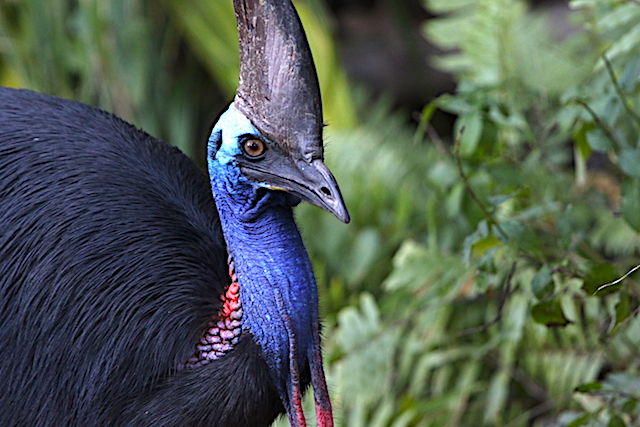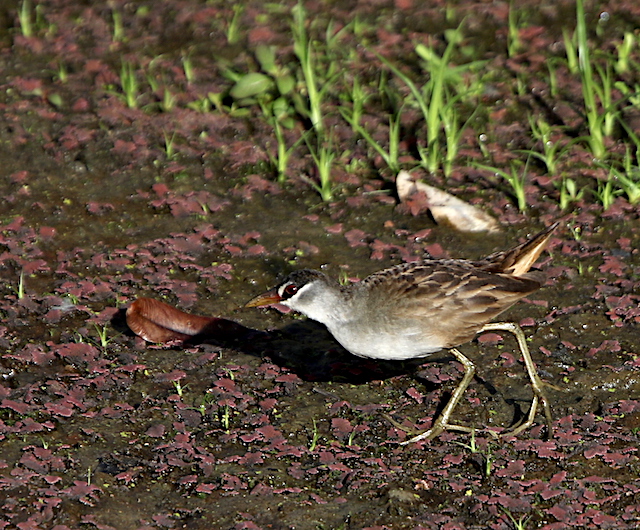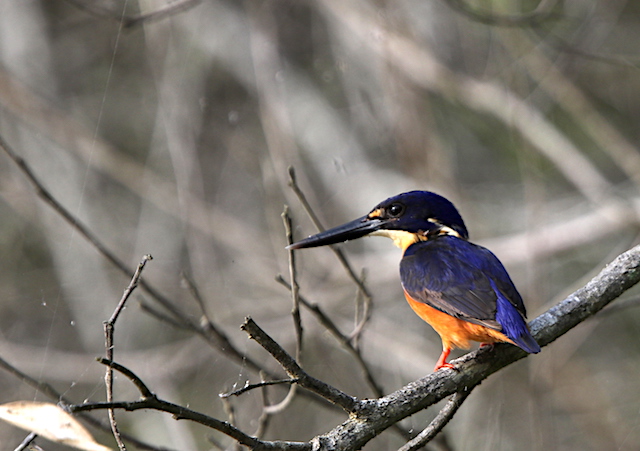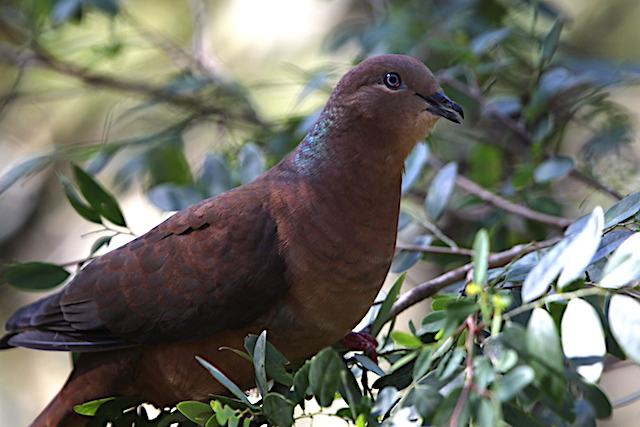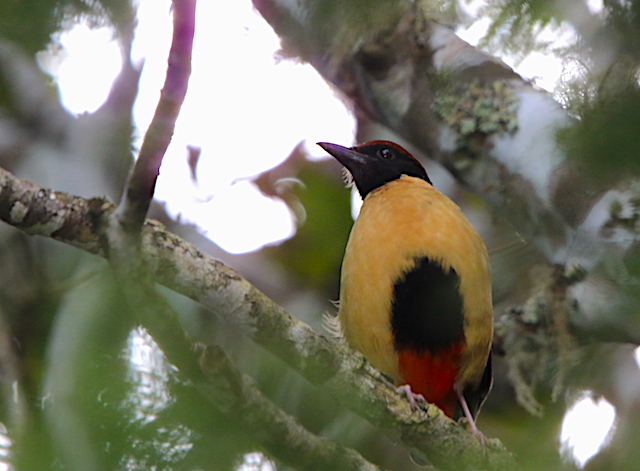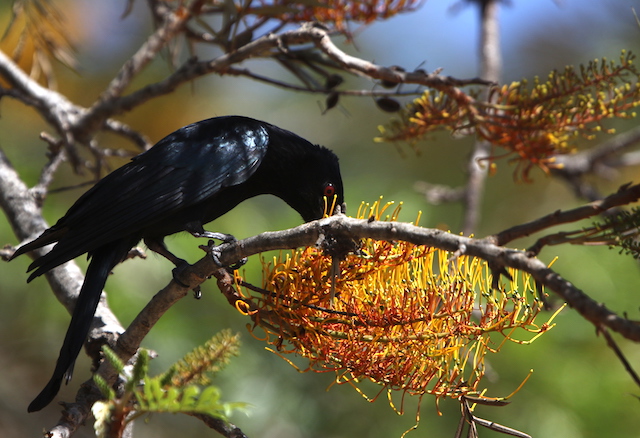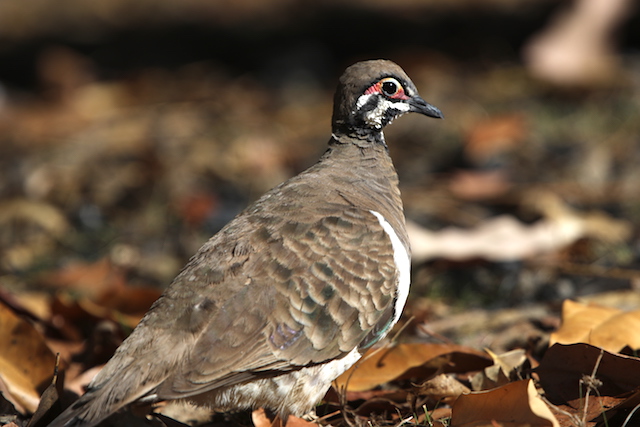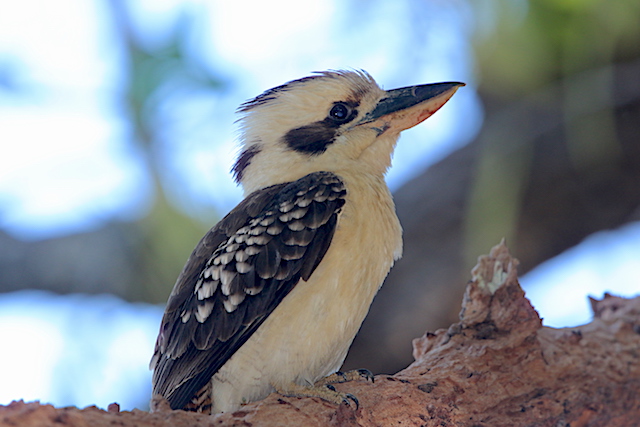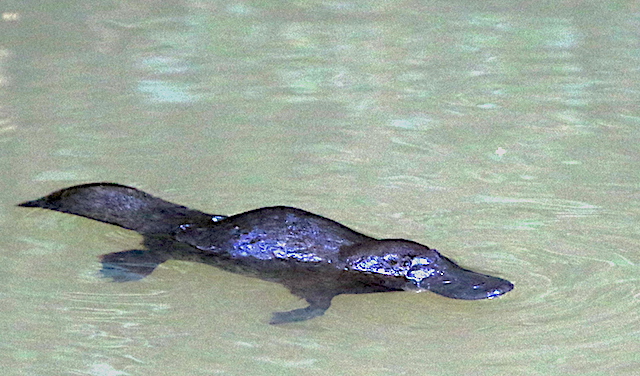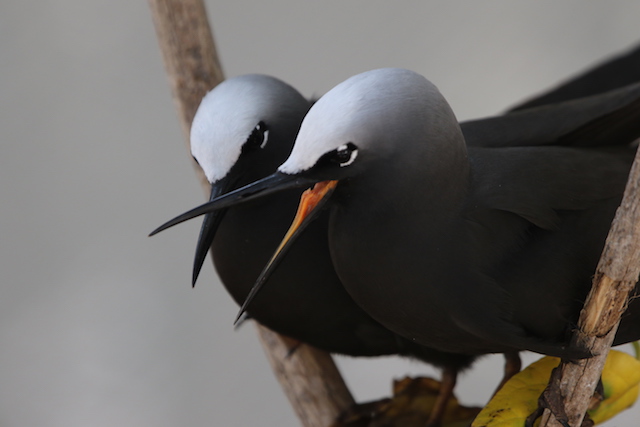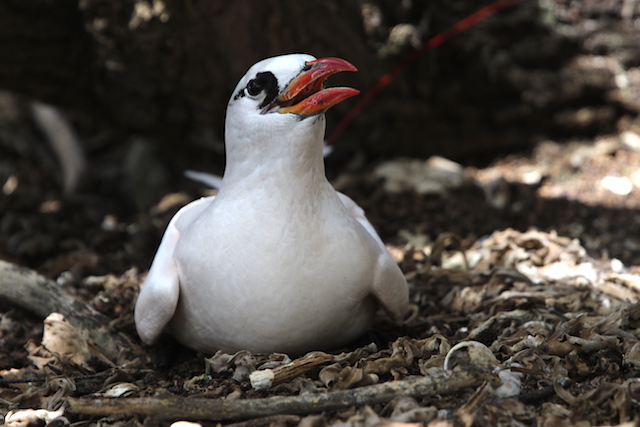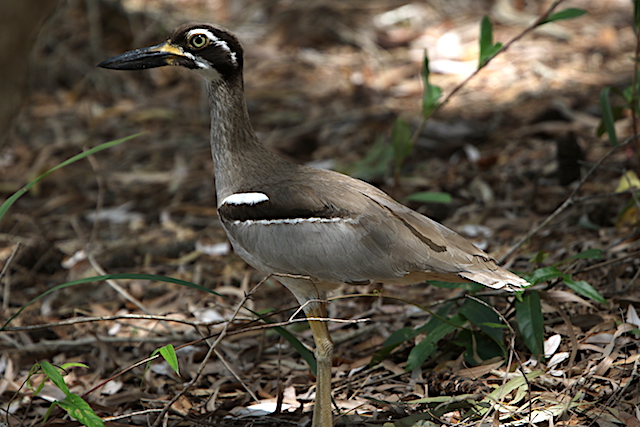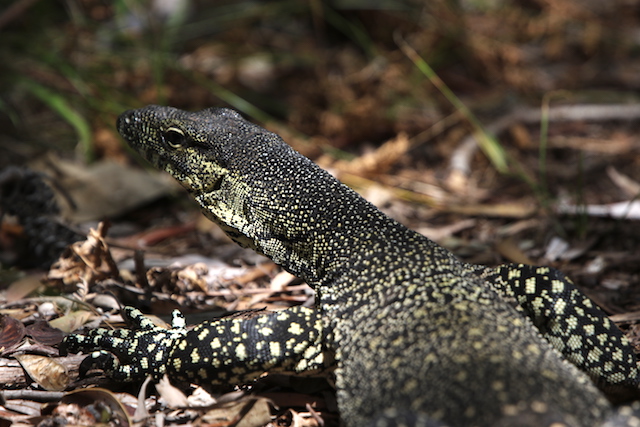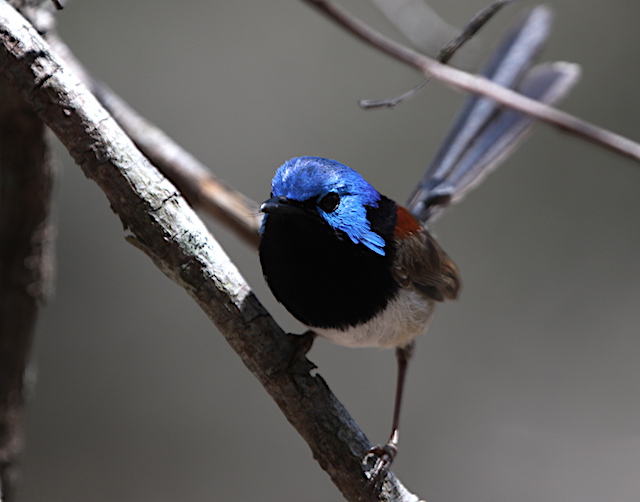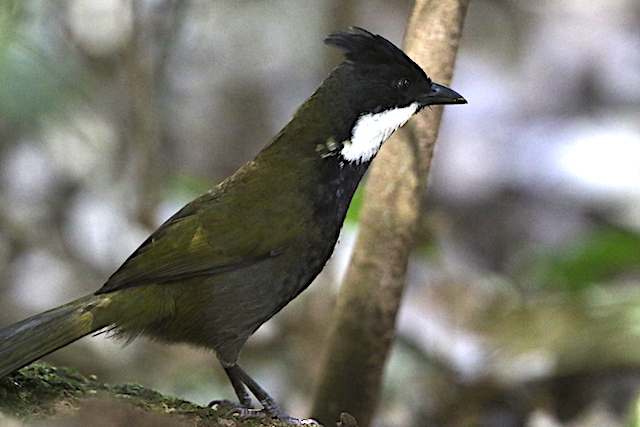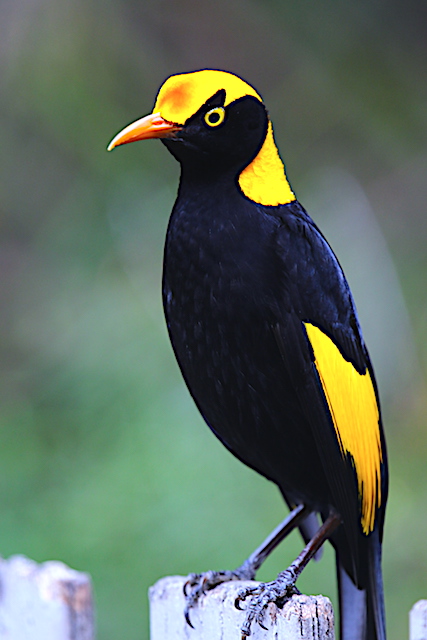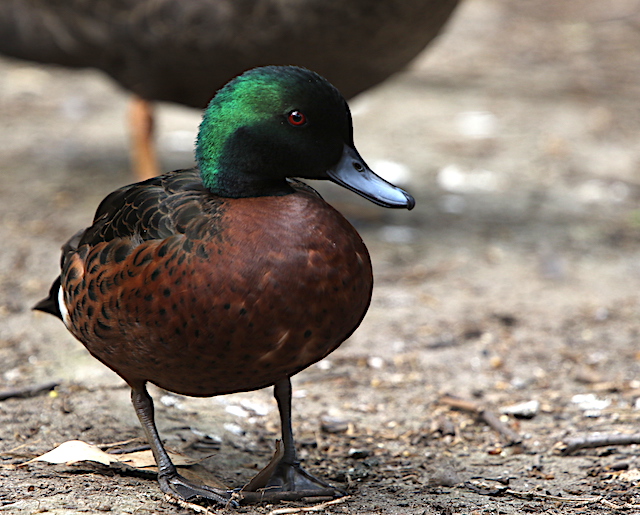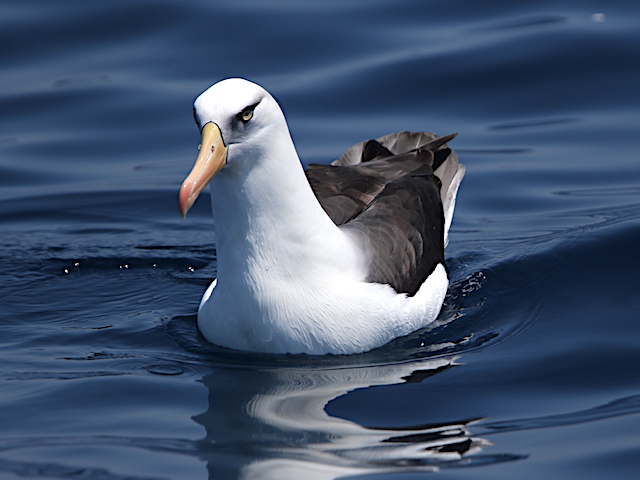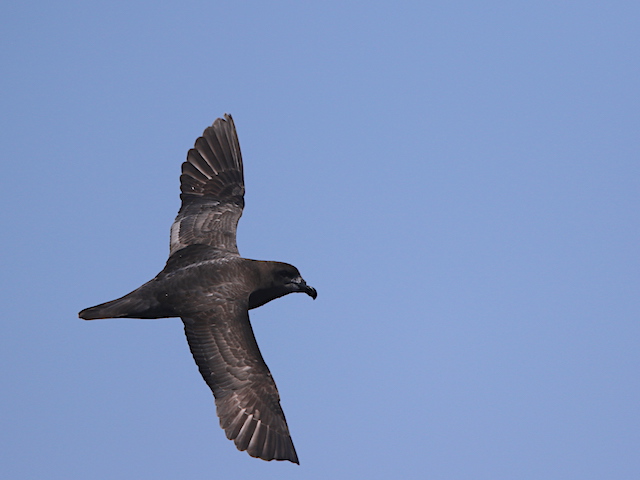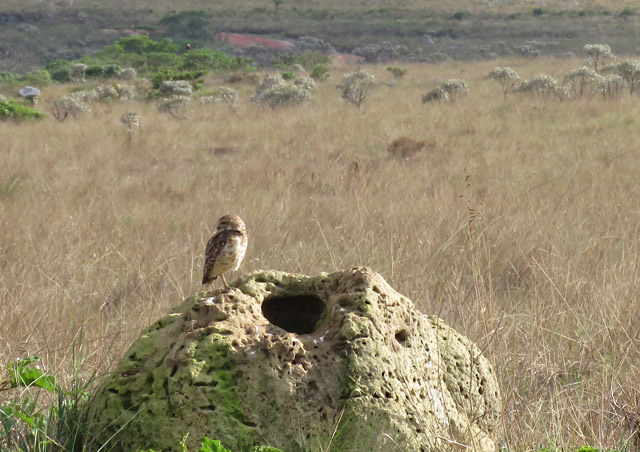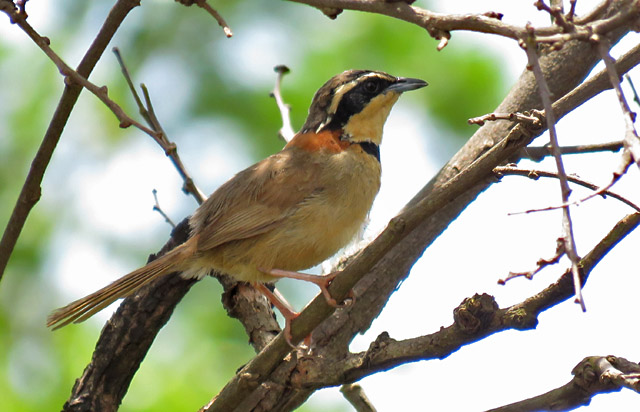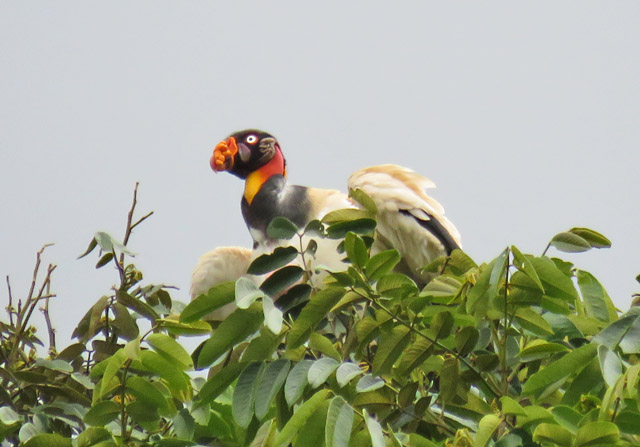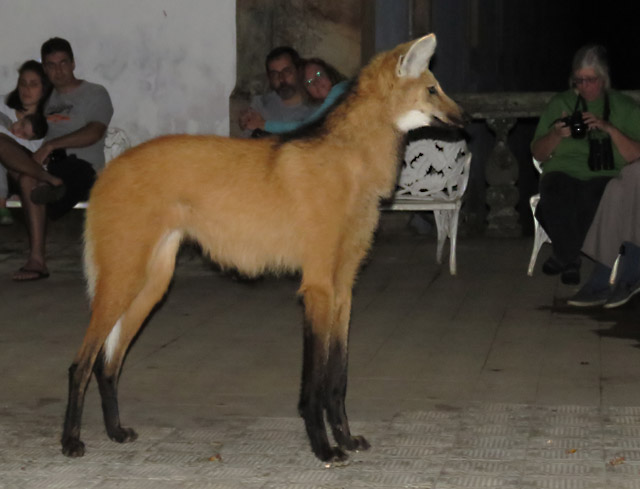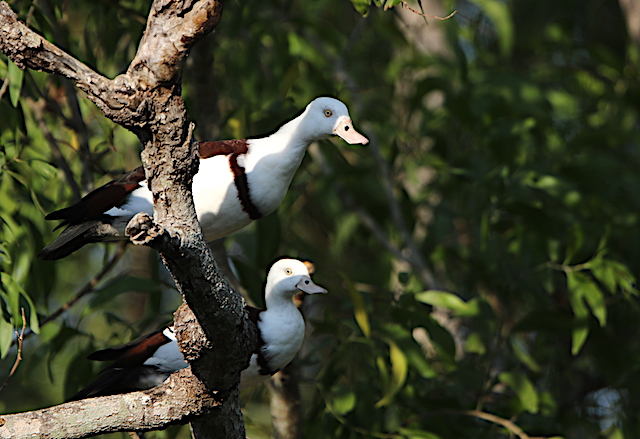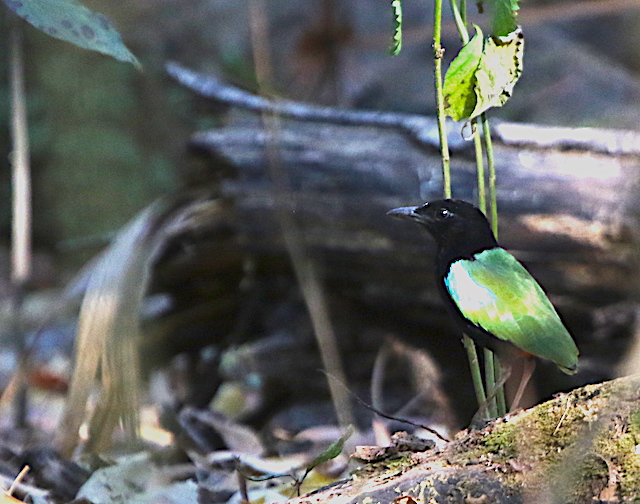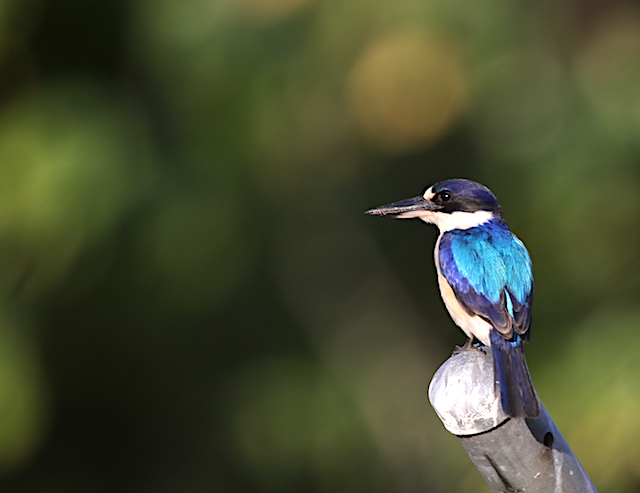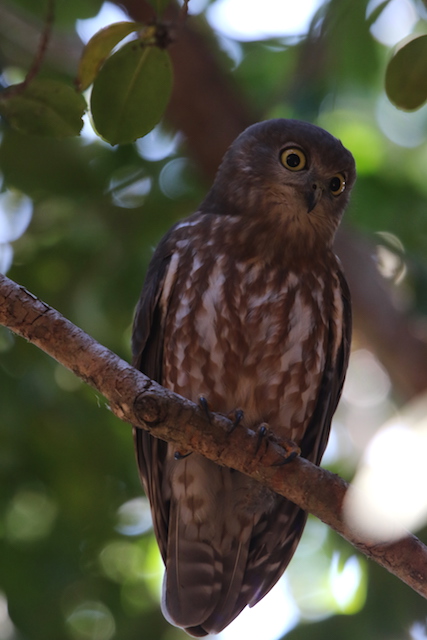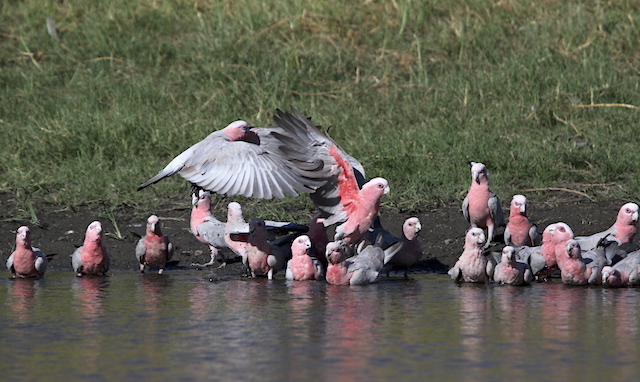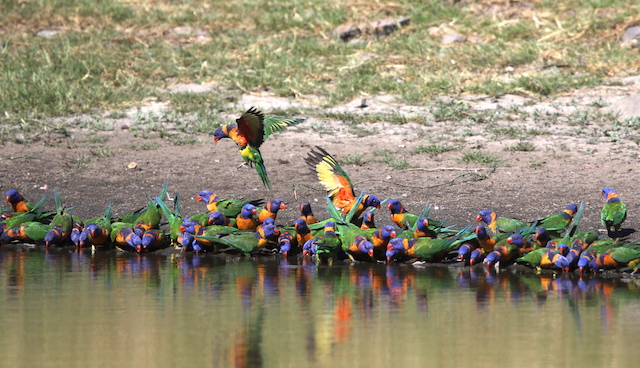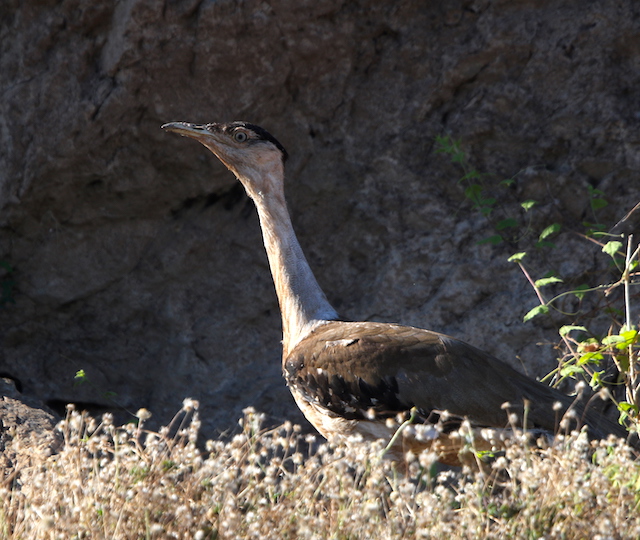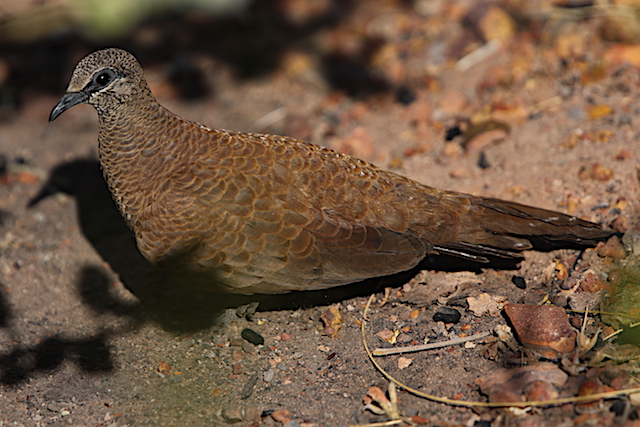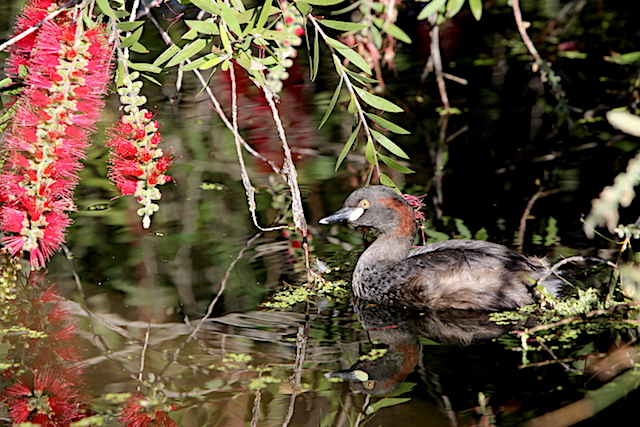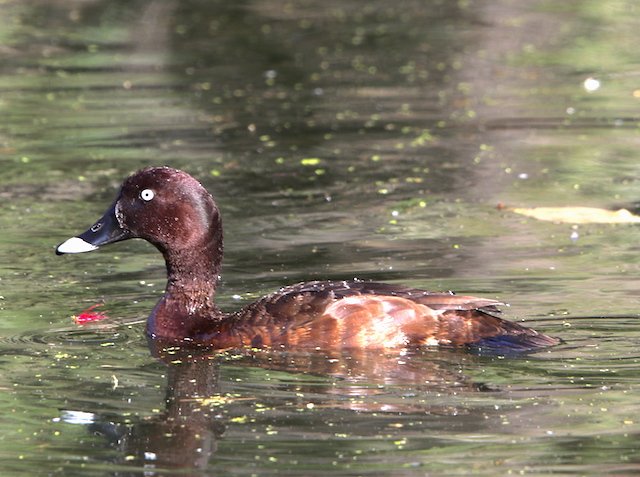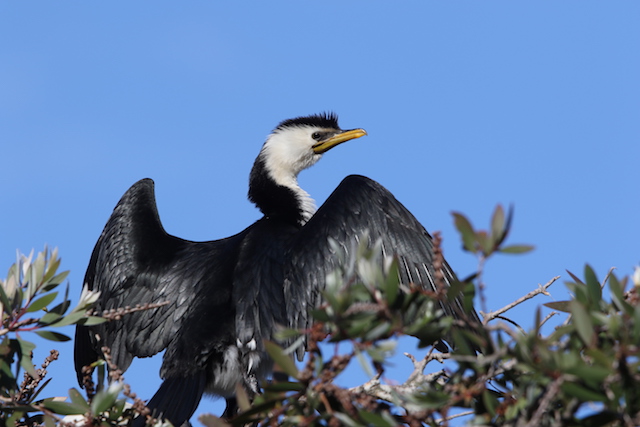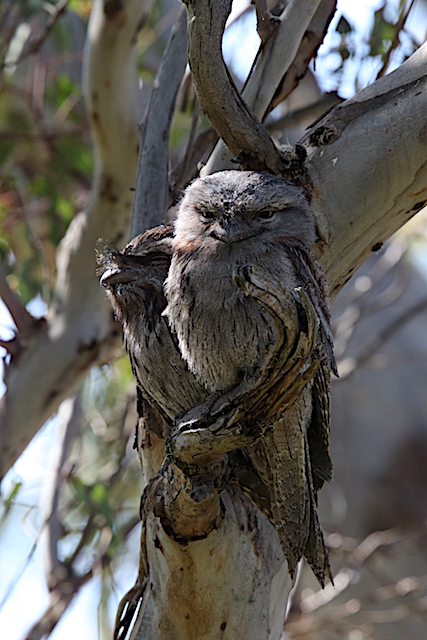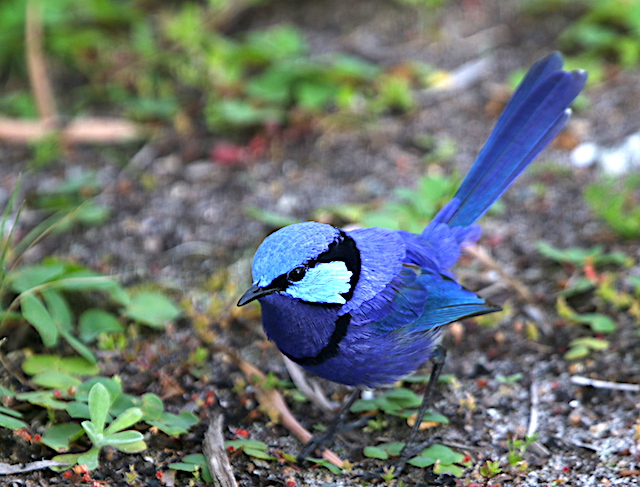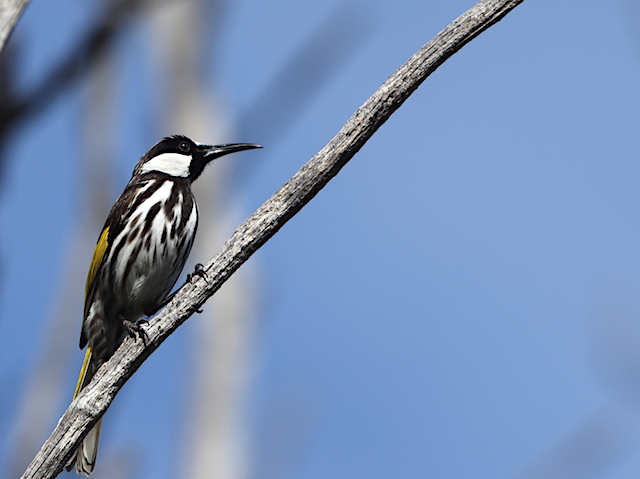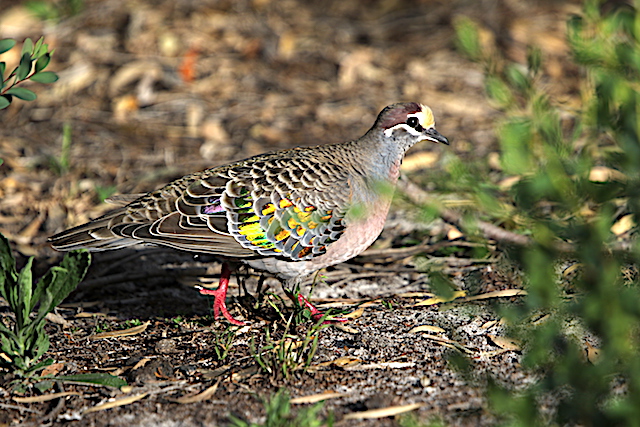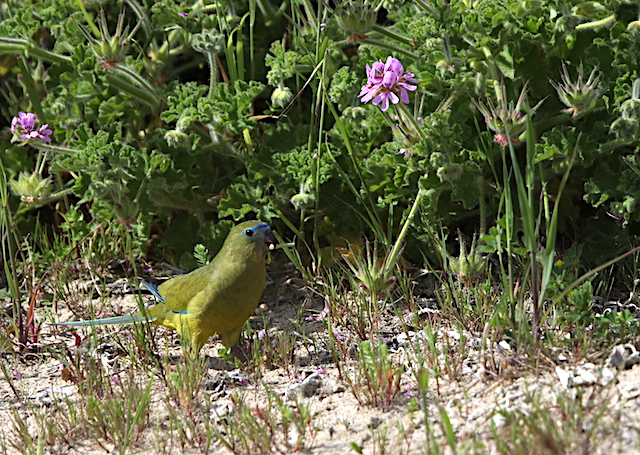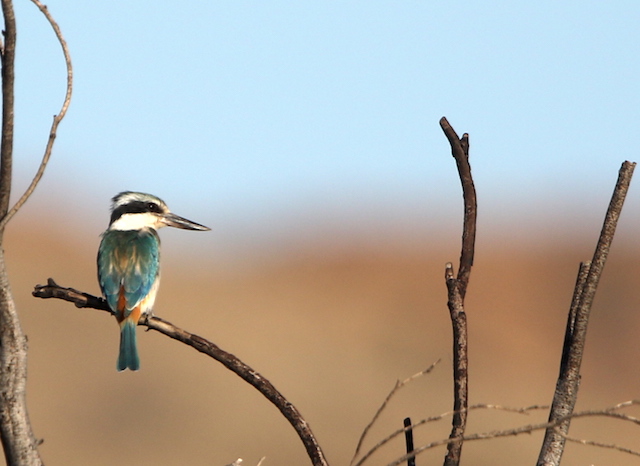From the Field
January 16:
Steve Howell on his recently completed Mexican tour to San Blas
As always, the birds kept us busy, but in a relaxed way based at a very comfortable hotel with excellent food and hospitality. From colorful trogons and warblers to cryptic potoos and feisty pygmy-owls; from flashy endemic jays and impressive Military Macaws to elegant Elegant Quail and dapper Black-capped Vireos; from poetry and a sunset beers to large crocodiles and colorful butterflies in tropical green forest, it was a very special week and a great group to be with. A few images capture some of the story.
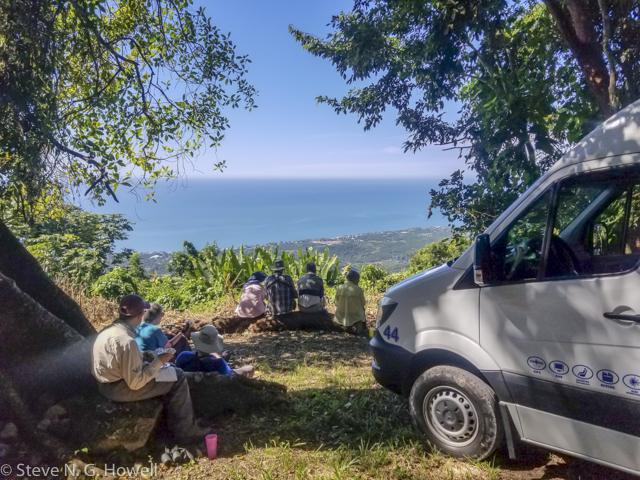
After unseasonal cold weather the first few days our last day turned out hot and we enjoyed a shady scenic picnic overlooking the Pacific.
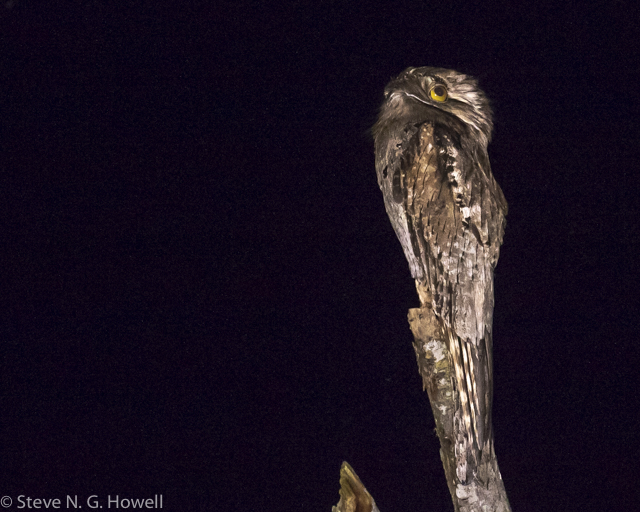
Northern Potoo is always a highlight, and this bird showed wonderfully.
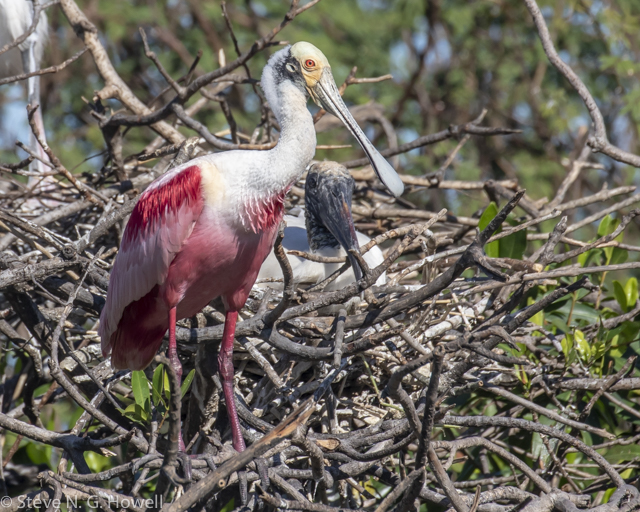
Wading birds were well represented as usual, including this Roseate Spoonbill amid nesting Wood Storks.
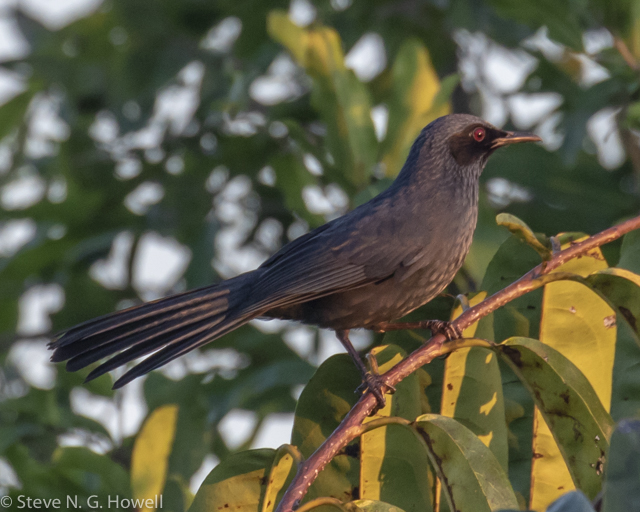
The typically elusive Blue Mockingbird showed well one afternoon...
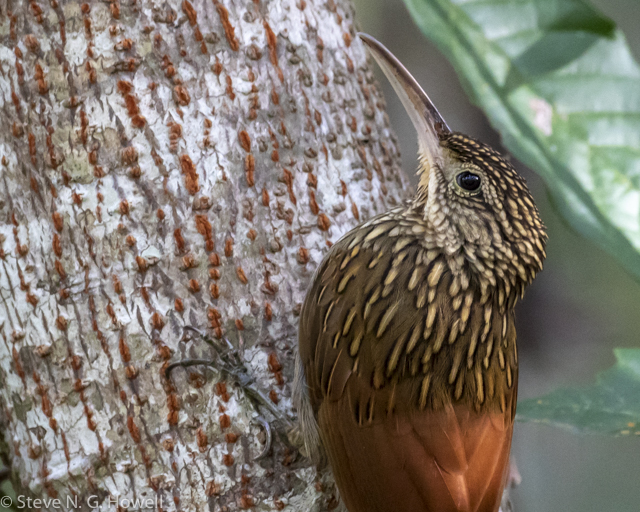
And a point-blank Ivory-billed Woodcreeper was another highlight.
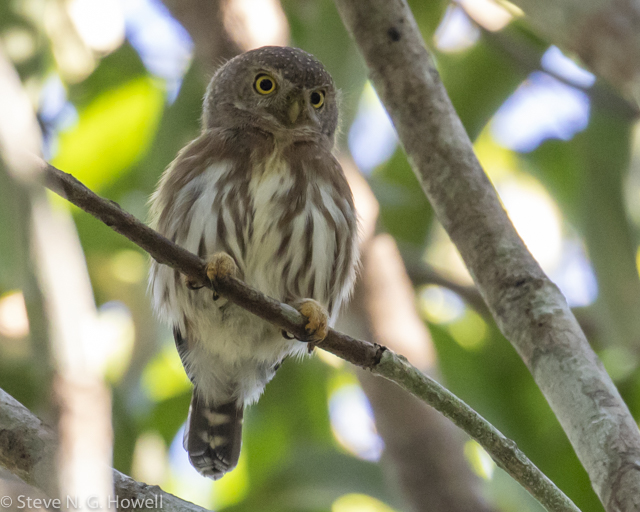
After a little searching, Colima Pygmy-Owl (which was being mobbed by Happy and Sinaloa Wrens!) put on a fine show.
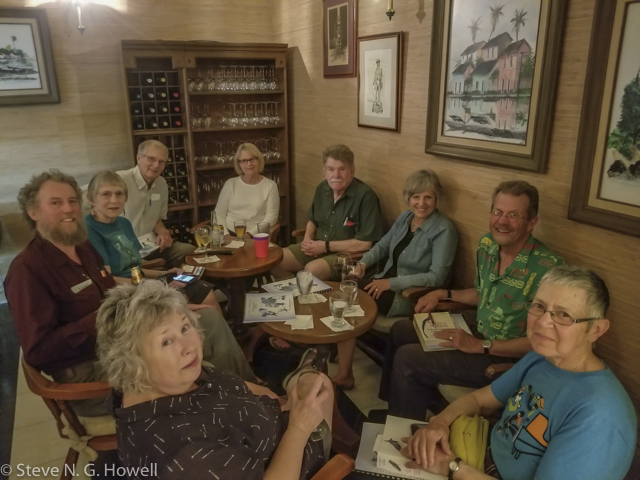
The group celebrating ‘just another great day in the field’ before another fine dinner.
January 7:
Gavin Bieber on his recently completed tour, Australia: Queensland and New South Wales
Our Eastern Australia Tour kicked off with a fantastic week around Cairns and the Atherton Tablelands. This region hosts the highest biological diversity in the country, including a number of the continent’s signature species, and this year we had incredible experiences with many of them. Just a sampling of our favorite sightings included...
a family group of Southern Cassowaries walking around near a stunning white-sand tropical beach...
White-browed Crakes in the open in a small roadside marsh...
Azure Kingfishers sitting along a mangrove laden creek...
Brown Cuckoo-Doves scarfing fruit in the rainforest...
and a pair of Noisy Pittas just a few feet away from our sumptuous breakfast at Kingfisher Park.
Our views of feeding Spangled Drongo...
Squatter Pigeon...
and Laughing Kookaburra in the drier forest to the west of the tablelands were excellent.
As always, tours to Australia are never solely about the birds;and in particular our lengthy views of Platypus near Yungaburra (one of an impressive 25 species of mammals for the tour) were a real highlight for many.
The second week kicked off on the idyllic Lady Elliot Island, on the southern edge of the Great Barrier Reef.
Here we marveled at nesting Black Noddies...
and Red-tailed Tropicbirds just feet from our lenses, as well as a host of other seabirds and a wide array of marine life, including an impressive 9-foot wide stingray.
A stop in at Inskip Point a bit to the south of Lady Elliot revealed some very cooperative Beach Thick-Knees...
a couple of large Lace Monitors...
and a family group of Variegated Fairywren (amazingly the 10th species of these charismatic birds we found over the 2019 tours; a clean sweep of the Australian group).
A little to the south around the famous O’Reilly’s Lodge the birds are almost tame, and forest birds often come to investigate your shoelaces.
Normally shy Eastern Whipbirds...
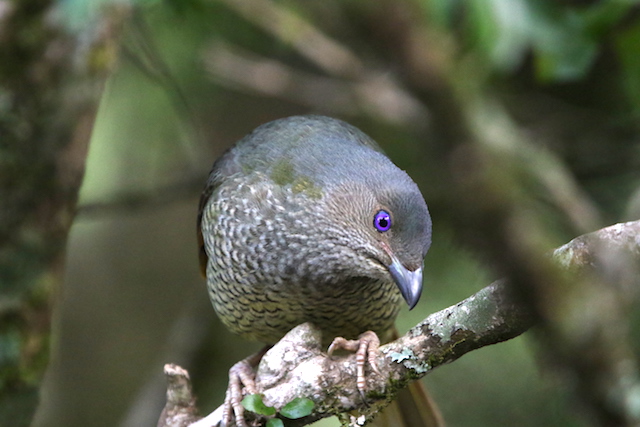
...and gorgeous Regent and Satin Bowerbirds are common visitors around the lodge, where they look over (or from) your shoulder for any dropped tidbits.
After O’Reilly’s we flew down to Sydney where we spent some time in the stunning and large Royal National Park that lies just a little to the south of the city. This park provided a great and scenic backdrop for our final day and a half, with a family group of Powerful Owls on a day roost
and a nice array of waterbirds including our first Chestnut Teal.
A pelagic trip out of Sydney harbor proved bucolic, with nearly flat seas and great viewing conditions. Hundreds of dolphins danced around the boat at times,
and we enjoyed repeated views of Campbell Albatross and Providence Petrels.
We finished the Eastern Tour with 299 species, and an amazing 451 species for the two tours combined. It is always with a touch of sadness that I board the plane to leave this amazing continent, and I very much look forward to next year’s duo of tours!
December 20:
Rich Hoyer on his recently concluded tour, Brazil: Minas Gerais
It’s hard to imagine a long week of birding with such a variety of habitats. Going from a shrubby cerrado and seasonally dry woodland at Cipó, to wet Atlantic Rainforest at Caraça, then to a curious mix of woodland, gallery forest, and savannah-like grassland at Canastra, we tallied 263 species of birds, only seven of which were heard. This was all in just eight days plus a couple hours, and even in those last couple hours we kept seeing new species. The grand hallelujah of the tour were the Brazilian Mergansers which at first were inexplicably elusive during a long day of searching, during which we still happened to see over 100 other species. But we eventually caught up with them, and we had excellent views of this super rare duck.
Burrowing Owls, close to the road and very common at Canastra, made it close to the top of the favorites...
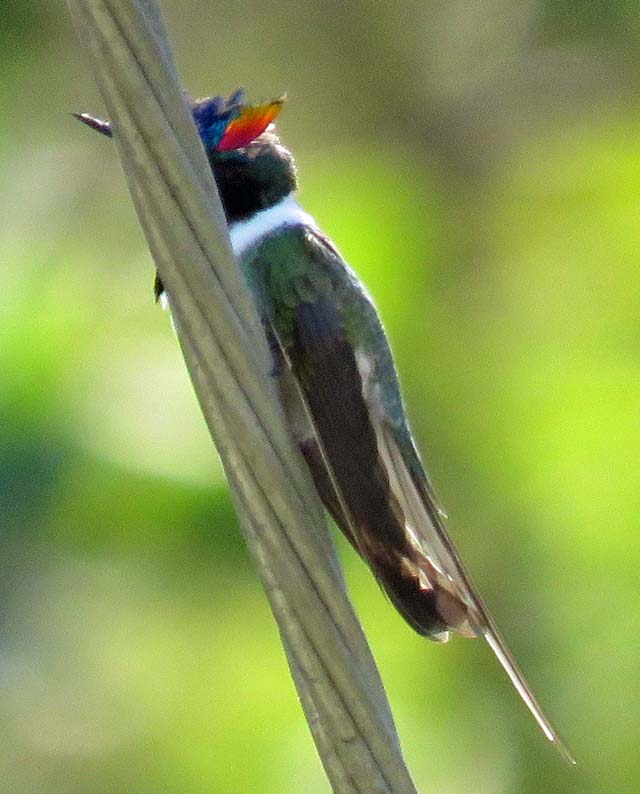
...as did a male Horned Sungem that perched at close range, showing some incredible colors in those horns.
Other species mentioned as particularly memorable included a female Frilled Coquette building a nest right over the road at Caraça...
...an unbelievably cooperative Collared Crescentchest (after I had warned everyone to be ready for an impossible-to-see skulker)...
...two King Vultures sitting in a tree...
...and a pair of Black-capped Donacobius duetting and doing their moves, proving what a taxonomic oddity they really are. And of course mammals featured prominently.
Maned Wolf appeared early and at great length on our first evening at Cipó...
...and Crab-eating Fox came the second evening. Giant Anteater was something everyone really wanted to see, and finally in the late afternoon a very distant animal was spotted by our driver Marcelo. We spent a long time on the roadside watching it through the spotting scope as it thoroughly searched the distant slopes, wandering back and forth. We were perfectly happy though, so it was quite a surprise on our last full day to be walking a woodland trail and have one nearly at arm’s length right next to the trail.
We had a fun group that worked well together so everyone got on every bird as best as possible, and our always friendly driver Paulo contributed with his own spotting skills and interest and knowledge of local birding spots.
December 13:
Gavin Bieber on his recent tour, Panama: Bocas del Toro and the Western Highlands.
It’s surely a testament to the diversity of habitats and birds that exist in this relatively small geographic area that over the course of eight birding days we detected 335 species between the Caribbean lowlands and Pacific-slope Highlands.
We started out in the Bocas del Toro Archipelago...
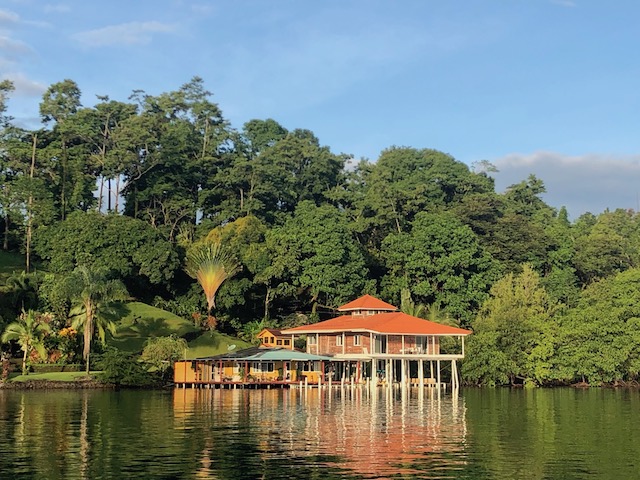
...where the semi-aquatic town of Bocas served as our access point to the idyllic Tranquillo Bay Ecolodge.
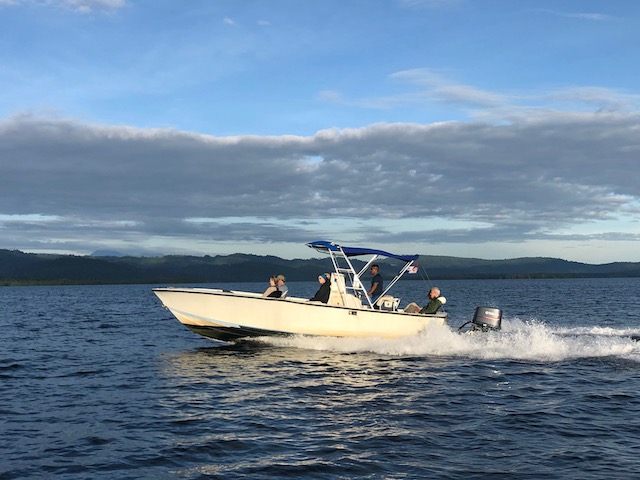
Traveling largely by boat we ventured out through the picturesque archipelago and to the humid Caribbean foothills...
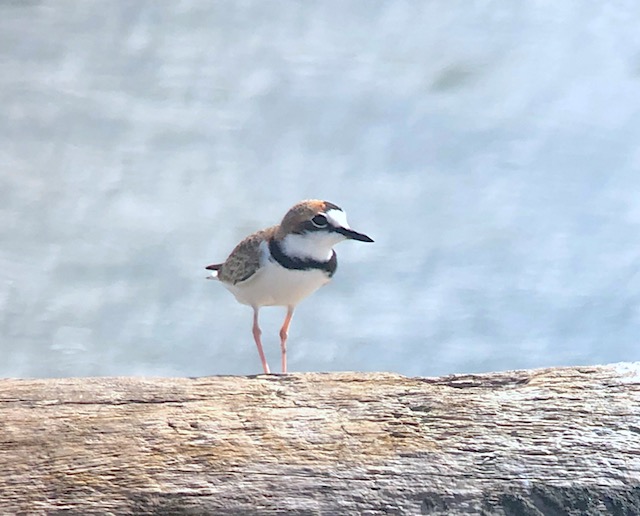
...where we were introduced to a wealth of birds including Collared Plover
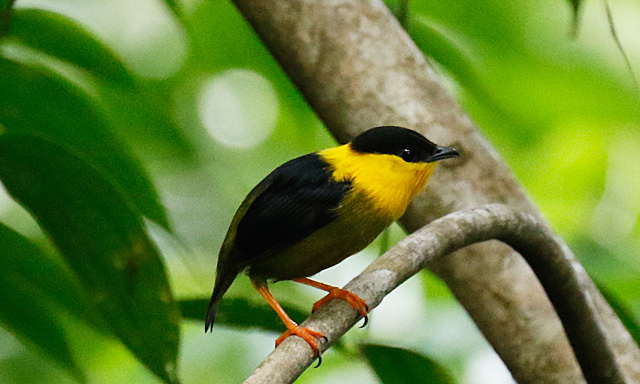
...and Golden-collared Manakin...
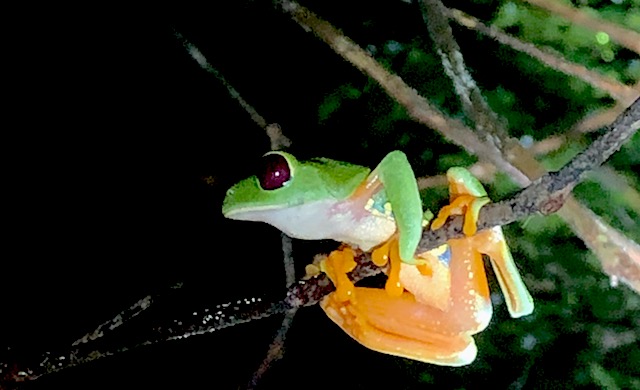
...and other animals like this handsome Red-eyed Treefrog.
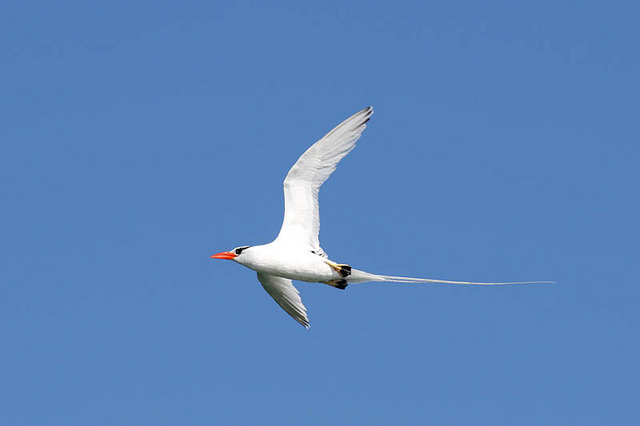
Perhaps the highlight birds of the first few days were the ethereal Red-billed Tropicbirds that we witnessed doing display flights at a small offshore colony.
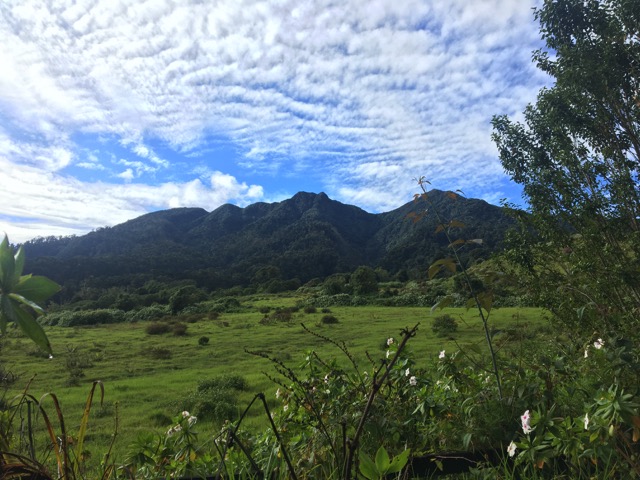
The second half of the trip visited the cool and heavily forested highlands around the impressive 11400 foot Baru Volcano...
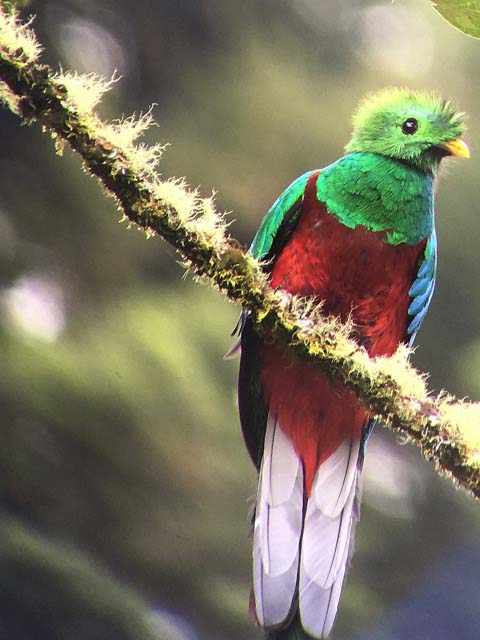
...where new birds like Resplendent Quetzal...
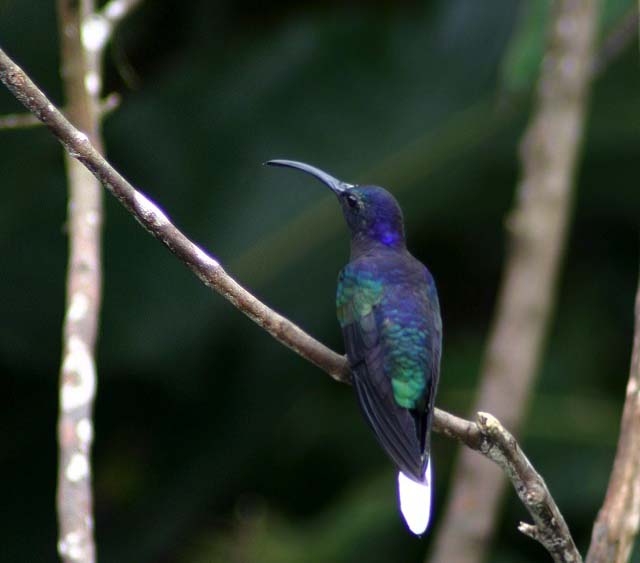
...and the impressive Violet Sabrewing awaited.
Is it any surprise that I very much look forward to my next tour here?
December 11:
Gavin Bieber comments on his recent tour to Panama's Darien Lowlands
The vast and sparsely populated Darien Province in the far east of the country contains some of the most remote and wild lowland and montane wilderness remaining in Central America.
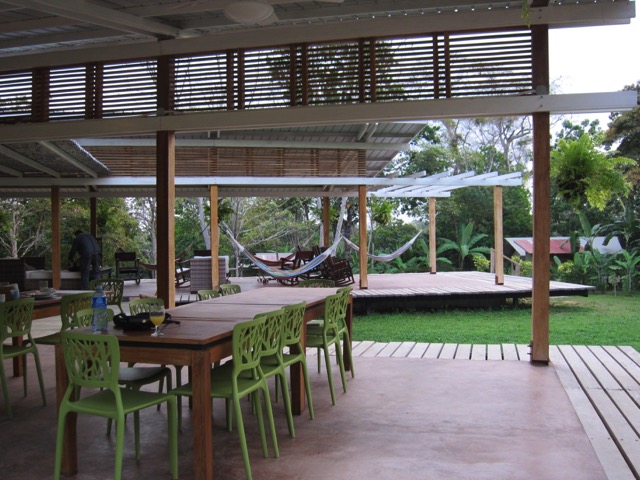
Our base for the week was the newly constructed and very comfortable Canopy Camp.
We spent several days exploring the camp trails and various spots along the end of the Pan-American highway, where patches of forest and more open fields revealed widespread birds...
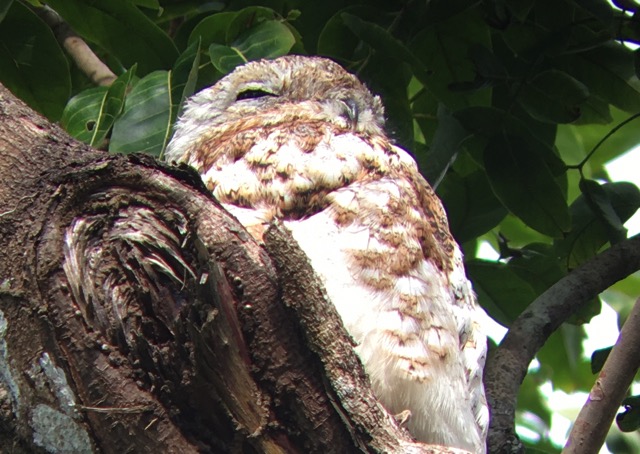
...such as Great Potoo, here on a roadside day roost...
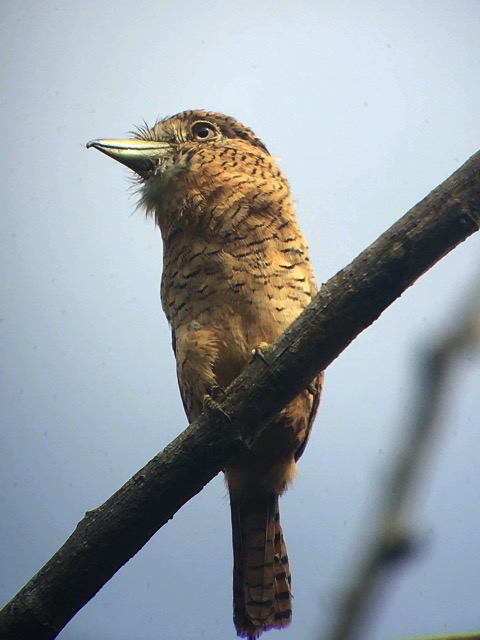
...and more localized ones such as the impressive Barred Puffbird...
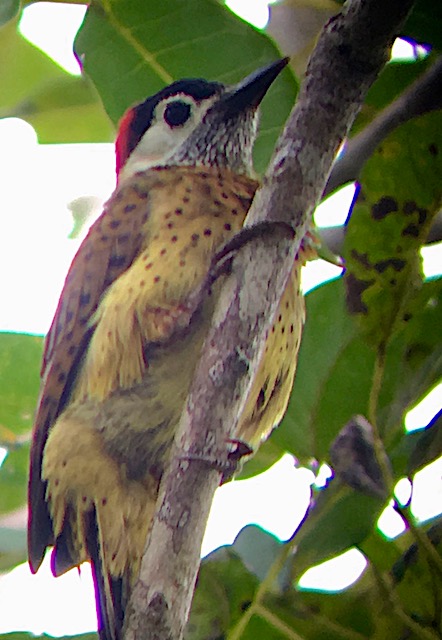
...and the beautiful Spot-breasted Woodpecker.
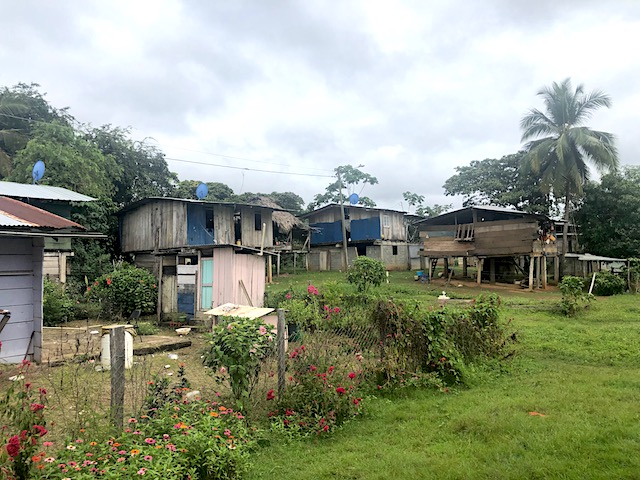
Taking dugout canoes out to a small Embera village out past the end of the road system...
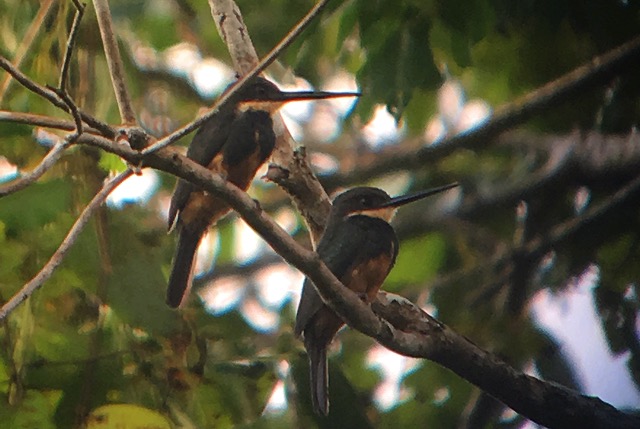
...allowed us to find a cooperative pair of Dusky-backed Jacamar, another globally range-restricted species...
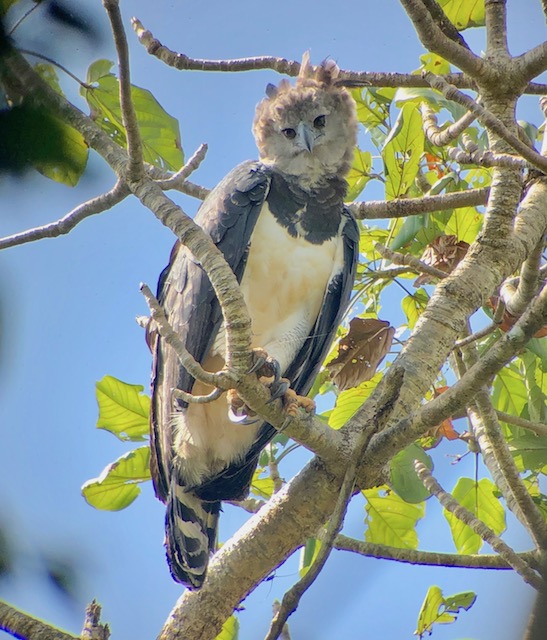
...and a wonderfully cooperative nesting pair of Harpy Eagles with a fuzzy two-month old chick.
Over the course six days in the field we encountered 242 species of birds including 14 species of antbirds and 29 species of everyone’s favorite bird family; the new world flycatchers! These areas in the Darien are little explored and I am sure that the attraction of a comfortable lodge will produce a lot of new discoveries...
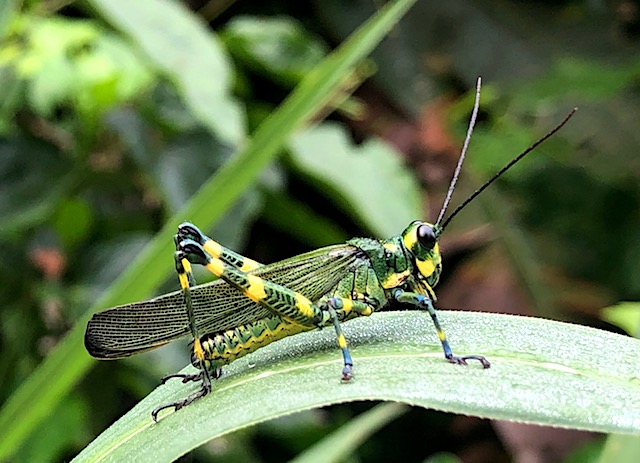
...not all of the avian kind.
I very much look forward to returning next fall!
December 9:
Paul French on his recently finished tour, Ghana
Ghana represents by far the easiest and most comfortable way to access West Africa's Upper Guinea rainforests and their host of endemic and special birds. Our tour took in the rainforests of the south and the savannah woodland of the north, resulting in nearly 370 species and some very special experiences. Here's a look at one of our days.
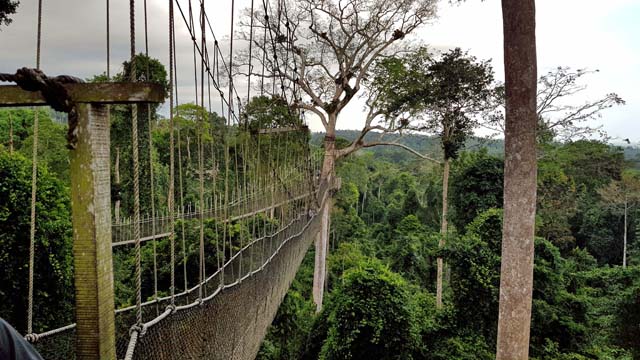
Our first foray into the hot and humid rainforest world was in the nation's most famous national park, Kakum, and its even more famous canopy walkway.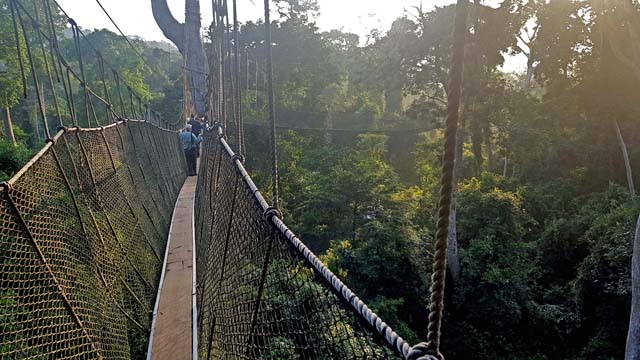
At 350 meters long and suspended over 30 meters high, Kakum's canopy walkway is one of only three canopy walkways in Africa. It's a great place to see many species that are otherwise very difficult to find, and just hanging around in the branches of canopy giants is a breath-taking experience.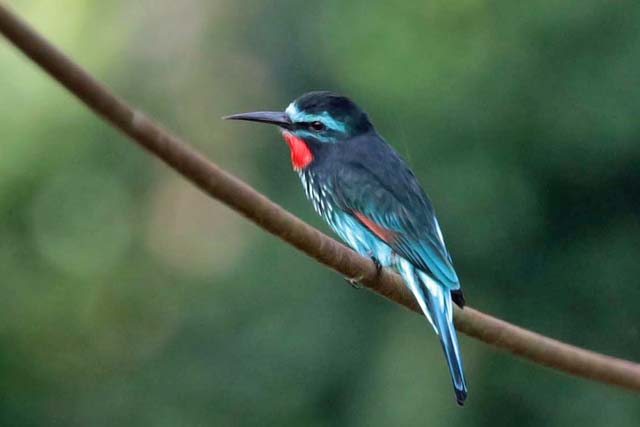
From here, birds are seemingly more fearless of humans and can approach quite closely. This Black Bee-eater demonstrates that in good light, it is actually not black at all!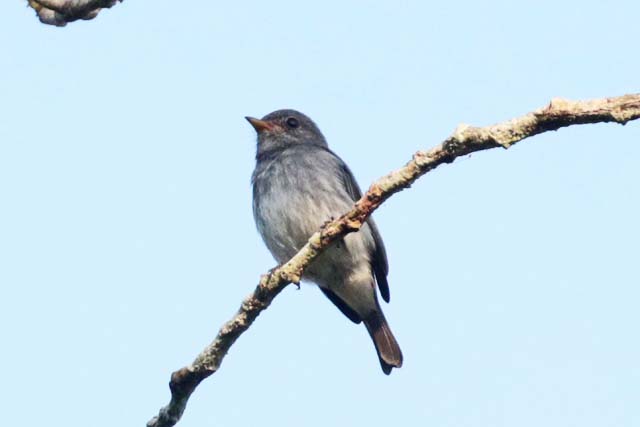
Little Grey Flycatcher is often missed on Ghana tours, being unobtrusive and often high up. We enjoyed prolonged views of this tiny flycatcher.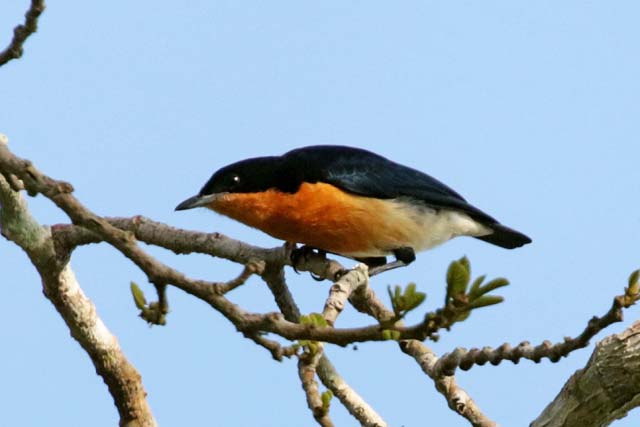
A pair of Violet-backed Hyliotas clambered around the flowering branches above us, showing us that they are one of the few species where the orange-breasted female is more brightly coloured than the male.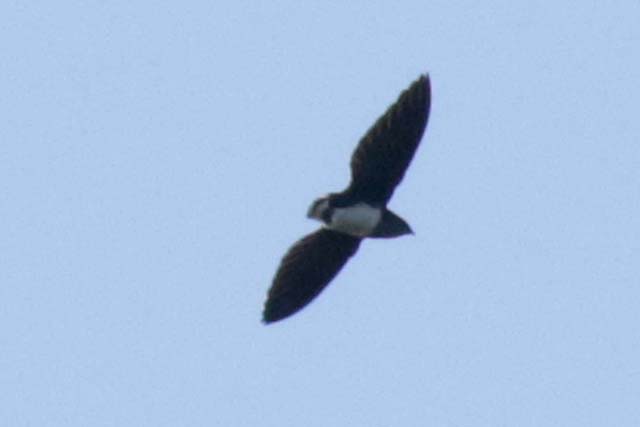
Overhead, a multitude of Common Swifts contained a good number of Pallid Swifts, but as soon as this Cassin's Spinetail appeared, all other swifts were forgotten!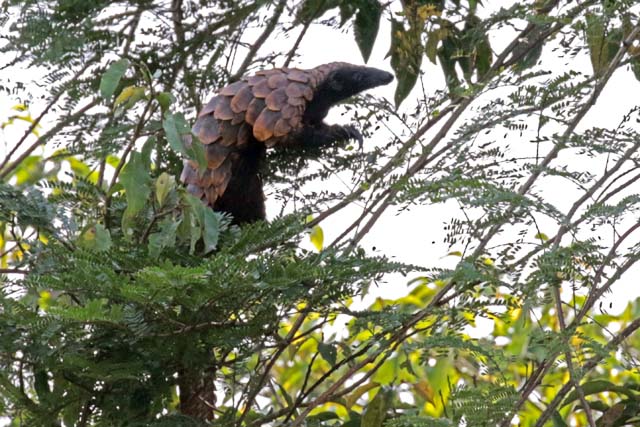
Bird of the day however, was not actually a bird! Initially mistaking its long, hanging tail for a large snake, the scales soon gave away that this belonged to a Long-tailed Pangolin! It crept into view, and then proceeded to give a great show in a tree close to one of the platforms. Depressingly rare nowadays, this was a real treat, and its just a shame all the photos were looking into the sun...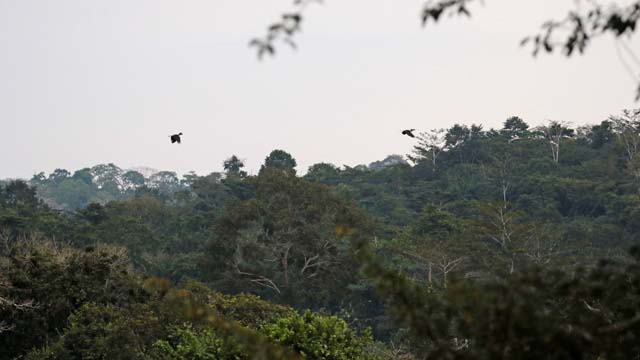
At the end of the day, a pair of Black-casqued Hornbills drifted lazily over the forest on their way to roost.
--------------------------------------------------------------------------------------------------------------
December 3:
Steve Howell reports from this year’s recently concluded tour, Chile: Tierra del Fuego to the Atacama Desert.
As well as incredible scenery, good food, and good company, our trip was blessed with mostly good weather. Covering the length and breadth of Chile, this trip always impresses with its contrasts. From stately King Penguins at a bleak beach in Tierra del Fuego to the tiny and critically endangered Chilean Woodstar in the Atacama Desert; from majestic Andean Condors soaring over the snow-capped Andes to Royal Albatrosses sailing over the Humboldt Current; from ultra-confiding Diademed Sandpiper-Plovers at an Andean bog to the iconic Magellanic Woodpecker in impressive southern beech forests; from shady bamboo thickets ringing with the songs of tapaulcos to wide-open Andean vistas with snow-capped volcanoes; and from the subtlety of earthcreepers to the flashy patterns of Chocolate-vented Tyrant, this was simply a great tour. The following images tell a small piece of the tale:
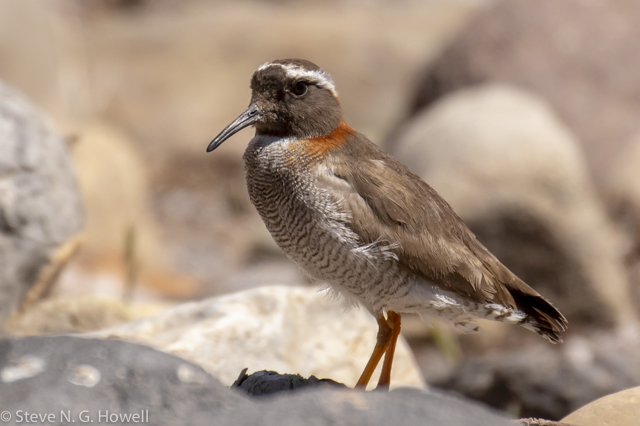
“Bird of the Trip” went to the incomparable little Diademed Sandpiper-Plover, a family group of which approached us to within about 10 feet, after we had posted ourselves 100 yards away to watch!
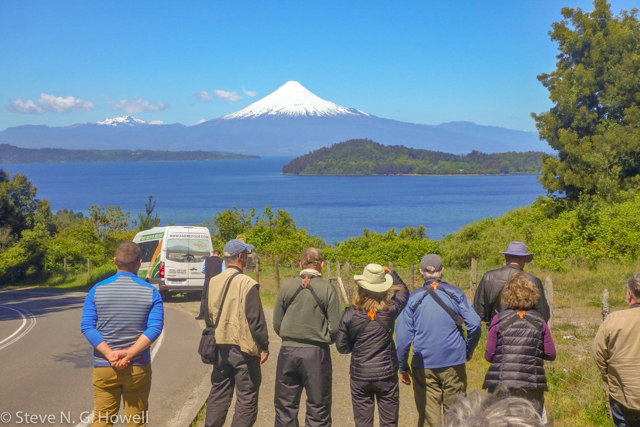
The Lake District weather was truly astonishing, with cloudless blue days and great vistas.
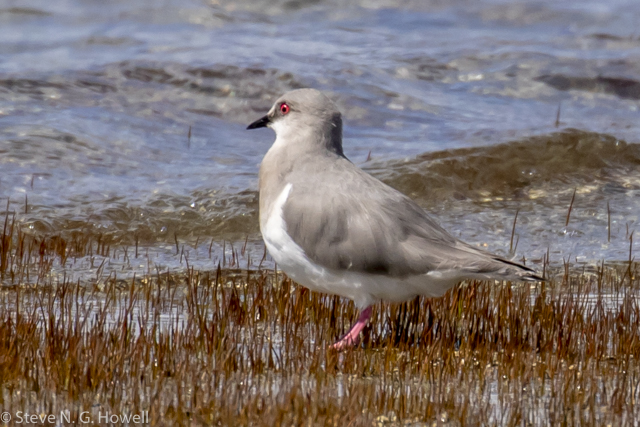
Magellanic Plover (aka “Ruby-eyed Pluvianellus”) showed well in the south...
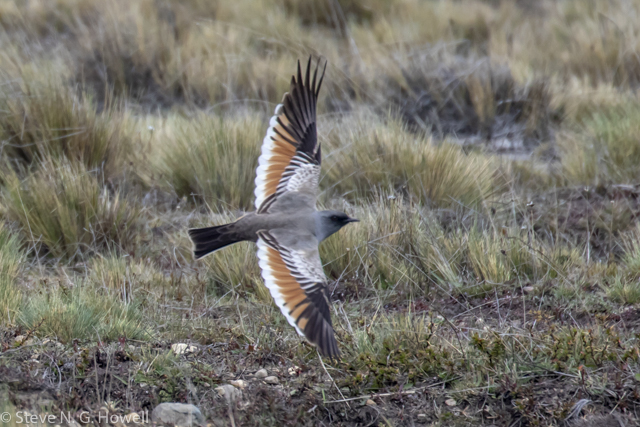
As did the striking Chocolate-vented Tyrant.
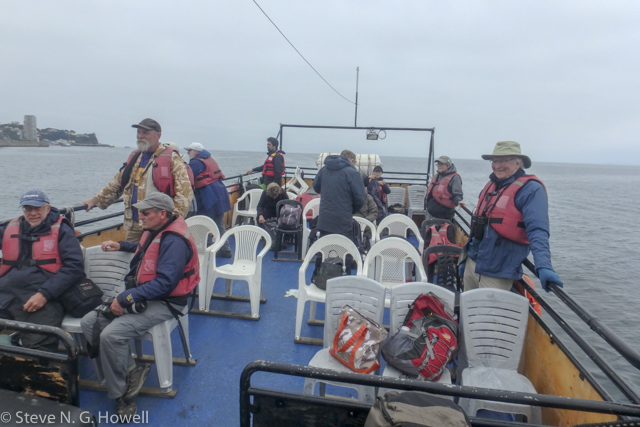
Our Humboldt Current pelagic is always a highlight of the tour.
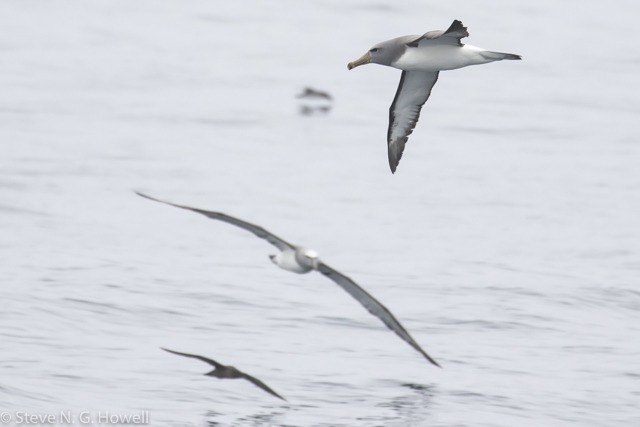
Here a Chatham Albatross flying by, with Salvin’s Albatross, Sooty and Pink-footed Shearwaters also in the frame...
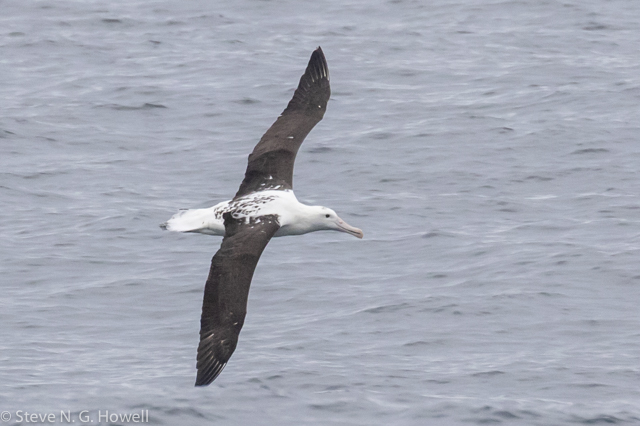
Here the huge Northern Royal Albatross, a young bird,...
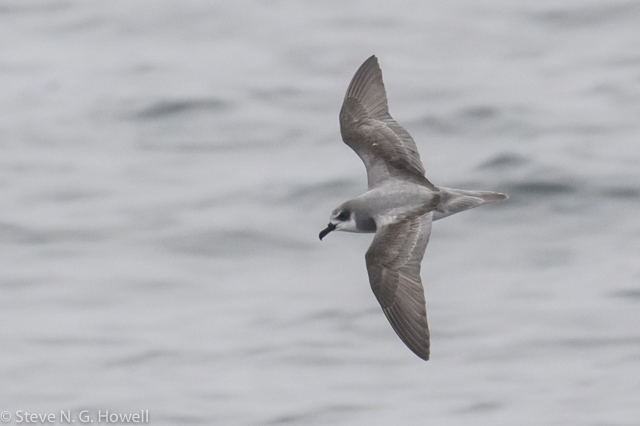
And here the dashing De Filippi’s Petrel, several of which showed very well.
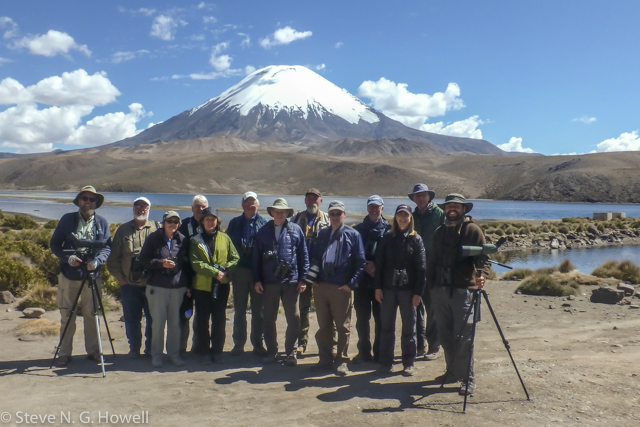
A happy group at the breath-taking 15,000-foot elevation Chungará Lake.
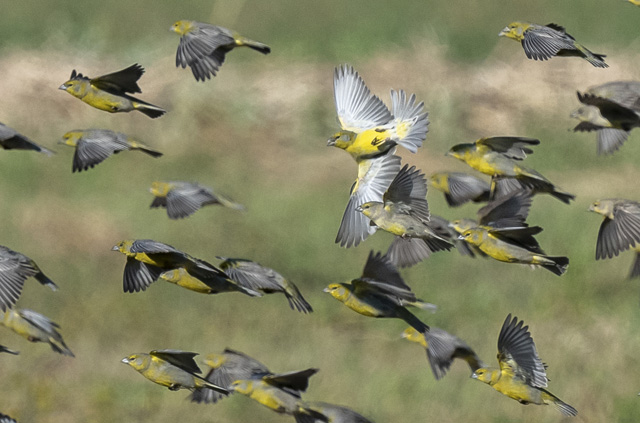
Spectacular swarms of the poorly known Raimondi’s Yellow-Finch were enjoyed on the last day of the tour—here just a small cross-section of one flock. Photo by tour participant Gordon Bills.
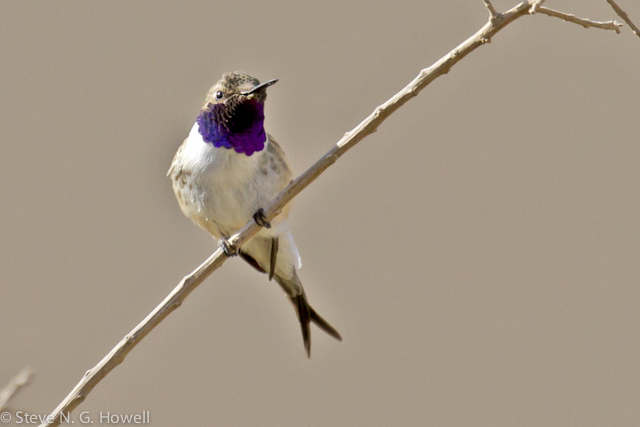
Along with the critically endangered—and tiny—Chilean Woodstar, a fitting finale to a wonderful tour.
November 24:
Gavin Bieber on week two of his tour, Western Australia and Northern Territory
Our second week covered the tropics of the Top End around Darwin and the outpost town of Kununurra, back in Western Australia near the East end of the Kimberley Mountains. Such diverse habitats yielded an amazing array of birds and mammals. The humid and comparatively lush lands surrounding Darwin seemed stuffed with new birds at every turn. Waterbird concentrations were excellent, with hundreds of Magpie Geese and lots of Rajah Shelduck surrounding the remaining patches of water and waiting for the arrival of the rainy season.
Rajah Shelduck
Rainforest patches around Darwin hosted gorgeous and somewhat approachable Rainbow Pittas and lots of gleaming Forest Kingfishers, and in the Botanic Gardens we had a cooperative Barking Owl on a day roost.
Rainbow Pitta
Forest Kingfisher
Barking Owl
Kununurra has the feel of a real outback town, with isolated and very beautiful grottos, and almost comically swollen Baobab Trees dotting the savannahs. Out on the savannahs we found the remaining waterholes to be quite active, with wheeling flocks of Galah and Red-collared Lorikeets coming in to drink, and the occasional Blue-winged Kookaburra staring down from an isolated tree.
Galah
Rainbow Lorikeet
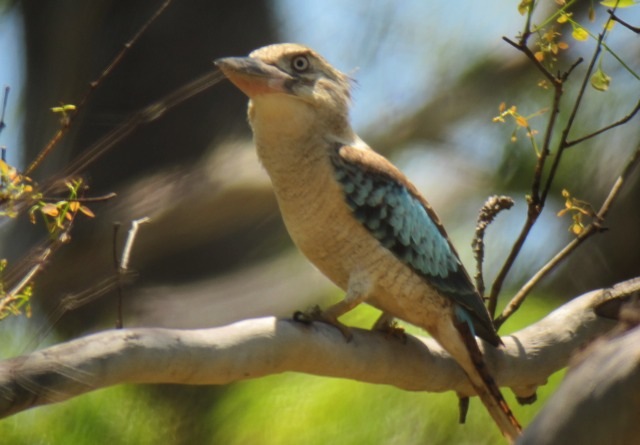
Blue-winged Kookaburra
We capped the trip off with a boat ride on Lake Argyle, where in addition to the hoped-for Yellow Chats we enjoyed excellent views of White-quilled Rock-Pigeons, and several Australian Bustards.
Australian Bustard
White-quilled Rock-Pigeon
November 15:
Gavin Bieber on his recently completed first week of our Western Australia and Northern Territory tour
We spent the first week birding around Perth and the southwest corner of the country. A wetland park in central Perth provided our first waterbirds, including a very approachable Australian Grebe, this fine drake Hardhead, cute Little Pied Cormorants and a roosting group of Tawny Frogmouth.
Australian Grebe
Hardhead
Little Pied Cormorant
Tawny Frogmouth
The drier forests around Dryandra and the Stirling Ranges were very productive, with repeated views of the aptly named Splendid Fairy-Wren and a nice array of honeyeaters including the handsome White-cheeked.
Spendid Fairy-Wren
White-cheeked Honeyeater
The gorgeous coastline near Cheyne’s Beach was our backdrop for several days, where we enjoyed especially good views of Common Bronzewing, all three of the coastal heathlands infamous skulkers and some foraging Rock Parrots.
Common Bronzewing
Rock Parrot
Leaving the temperate SW corner behind we then visited the heart of the country around Alice Springs. This beautiful desert landscape was heavily gripped by drought and above average temperatures, but here we found an array of fantastic species such as this striking Red-backed Kingfisher, and a Western Bowerbird here seen in mid display at a bower in the botanical gardens
Red-backed Kingfisher
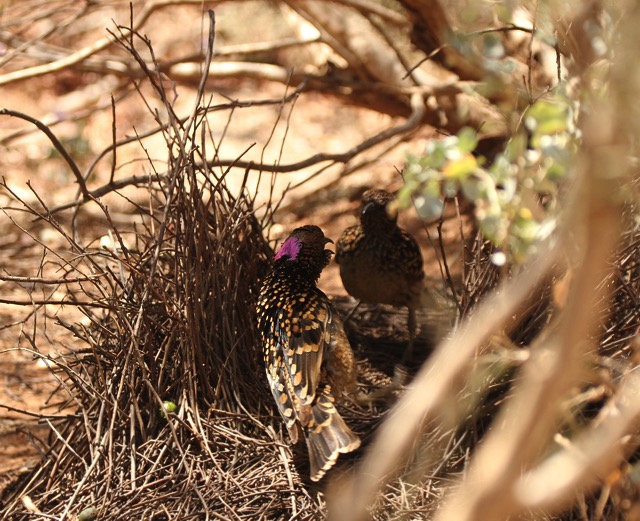
Western Bowerbird
November 11:
Jake Mohlmann on his recently completed tour, Argentina: The North - High Andes, the Chaco and Iguazú Falls
On our recently finished tour through some of Argentina’s northern sections we scoured misty cloud-shorn Yungas forests, meandering Monte scrub, dry thorny Chaco stands, arid endless Altiplano and exceptionally wet southeast Brazilian rainforest. We noted 470 species of birds setting a new record for this ever-evolving and extremely exciting itinerary. There was however one clear highlight I should probably mention first...
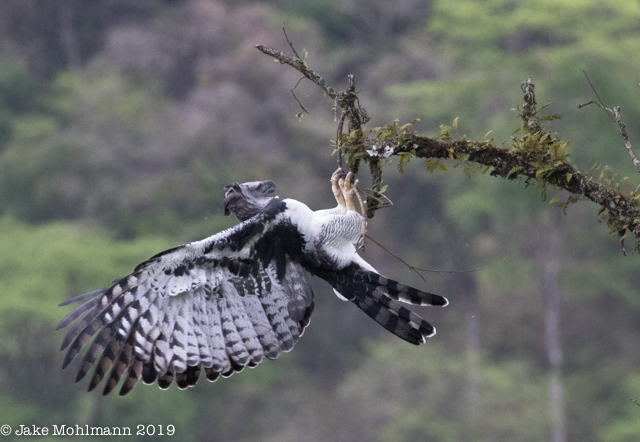
The Harpy Eagle battling for a nest stick.
While in Calilegua National Park, a local guide stopped and showed us a picture of a Harpy Eagle on her phone. We thought that was exciting for her but sadly of no direct interest to us until we realized she had JUST taken the picture about three kilometers down the road from where we were standing. Needless to say we kicked up some dust as we shot off to the aforementioned area in time to see this unbelievably regal rainforest predator in all its glory! After our initial viewing we managed to track it again further down canyon and watch as it struggled but ultimately succeeded in removing a sturdy branch it was determined to use for its nest.
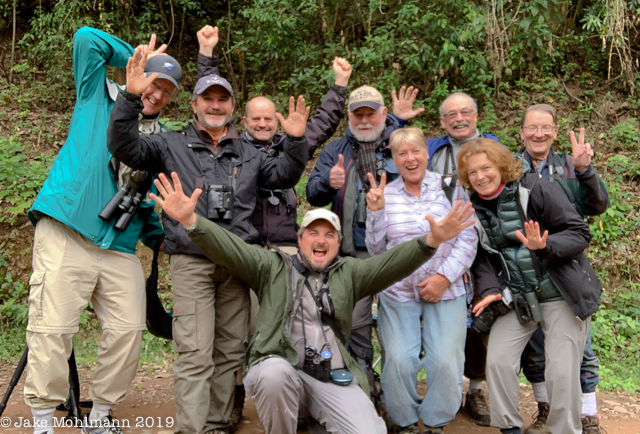
An elated group after seeing the mega predator Harpy Eagle!
Of the 14 species of hummingbirds on the tour it was difficult to pick a favorite, but all agreed it was hard to beat the gaudy rectrices of the male Red-tailed Comet. This bird also happened to be the hummingbird we encountered on the most days of the tour.
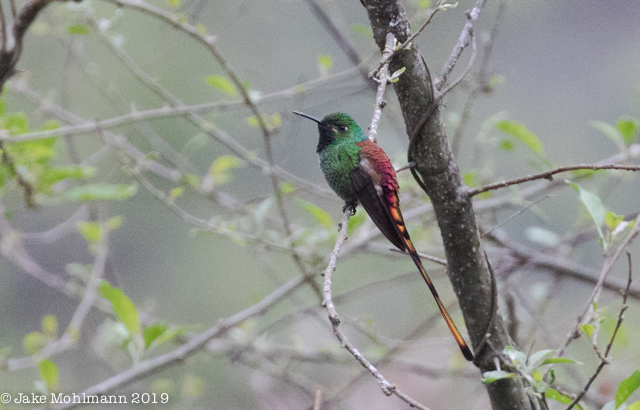
A metallic male Red-tailed Comet defending a flower patch.
Even though this tour is unique in South America because there is only a single Antpitta that we typically try for, we do tend to see it very well. Among the 15 or so White-throated Antpittas we heard one day, a particularly bold individual couldn’t resist checking us out at close range.
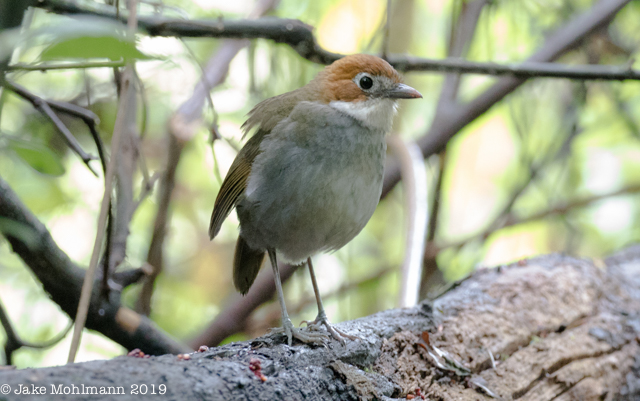
This year we had very close views of the White-throated Antpitta.
The scenery at Iguazu Falls never ceases to amaze and witnessing such a huge quantity of water crashing into the depths below is awe inspiring. It’s also amazing how birds, like the Great Dusky Swifts, manage to find nesting substrate in the raging torrent.
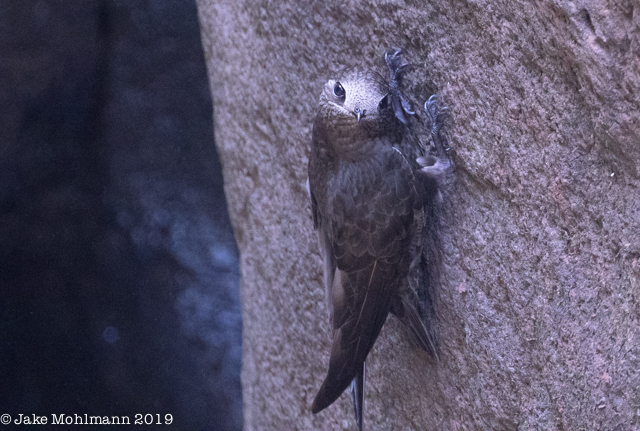
Eye level views of Great Dusky Swifts at Iguazu Falls
Another bird voted (second) best of the trip by some was the endangered Black-fronted Piping Guan we saw extremely well in northern Misiones Province. Thanks to the expert knowledge of our local guide we watched as one of these spectacular creatures flew in right on time and fed on mossy rocks within 50 feet of the group!
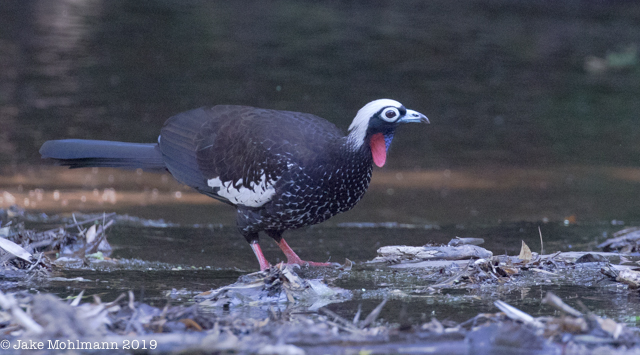
This endangered Black-fronted Piping Guan posed for pictures.

